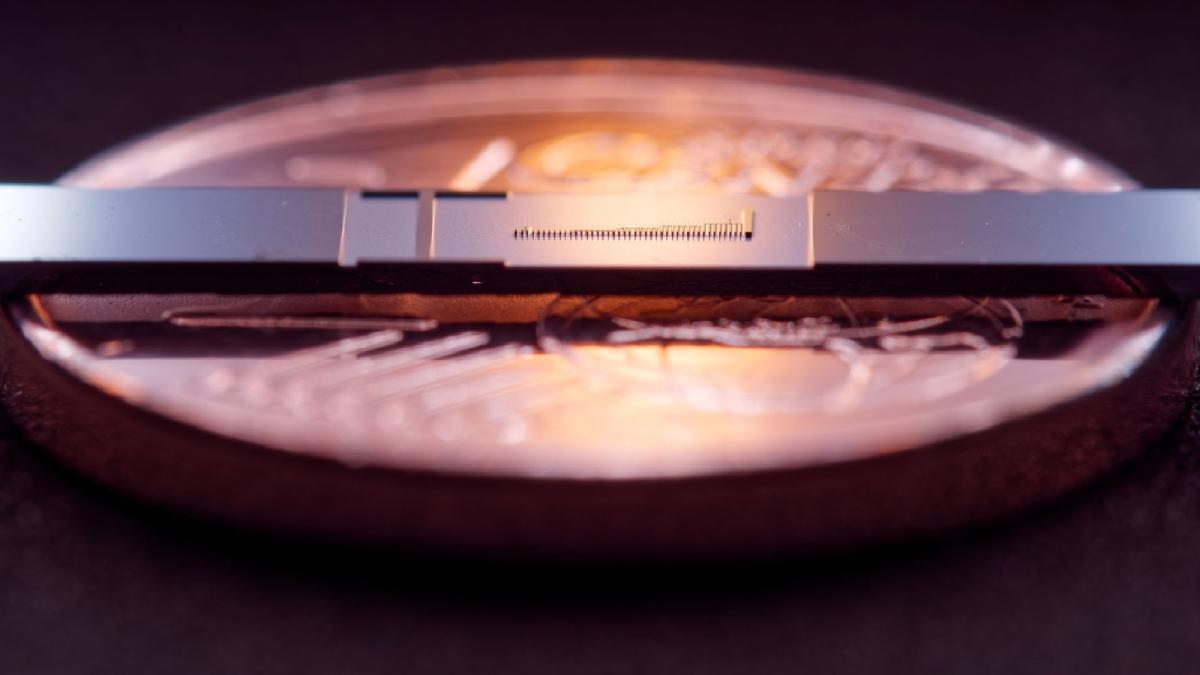In a groundbreaking achievement, scientists have successfully activated the world’s smallest particle accelerator. This remarkable technological feat, comparable in size to a small coin, has the potential to revolutionize various fields, including the use of miniature accelerators for medical purposes within the human body.
The nanophotonic electron accelerator (NEA), the name given to this new invention, consists of a tiny microchip housing an even smaller vacuum tube composed of numerous individual “pillars.” By directing miniature laser beams at these pillars, researchers can accelerate electrons, as detailed in this informative link.
Notably, the main acceleration tube measures a mere 0.02 inches (0.5 millimeters) in length. To put this into perspective, it is 54 million times smaller than the Large Hadron Collider (LHC), a colossal 16.8-mile-long (27 kilometers) structure located in Switzerland. The LHC, renowned as the world’s largest and most powerful particle accelerator, has made numerous groundbreaking discoveries, including the detection of the Higgs boson (or God particle), ghostly neutrinos, charm mesons, and the mysterious X particle.
Inside the diminutive tunnel, the space is a minuscule 225 nanometers wide, while human hairs are 80,000 to 100,000 nanometers in thickness, according to the National Nanotechnology Institute.
Related: Why a physicist wants to build a particle collider on the moon
A research study recently published in the renowned journal Nature showcases the success of the nanophotonic electron accelerator developed by researchers from the Friedrich-Alexander University of Erlangen–Nuremberg (FAU), Germany. The study reveals that the NEA has increased the energy of electrons from 28.4 kiloelectron volts to 40.7 keV, achieving a remarkable 43% improvement.
Remarkably, this is the first time that a nanophotonic electron accelerator, initially suggested in 2015, has been successfully activated. The researchers shared their excitement in a statement, asserting that they have essentially developed a particle accelerator on a microchip. However, it is worth noting that the results from Stanford University’s miniature accelerator, which also achieved successful activation, are yet to undergo review.
“For the first time, we really can speak about a particle accelerator on a [micro]chip,” declared Roy Shiloh, a physicist at FAU and one of the study’s co-authors.
Unlike the LHC, which utilizes over 9,000 magnets to generate a powerful magnetic field for particle acceleration at nearly the speed of light, the NEA operates by directing light beams at the pillars within the vacuum tube, creating a weaker but effective energy field.
Although the energy level achieved by the NEA only represents a minute fraction of that produced by large colliders, the researchers have faith in potential enhancements by utilizing alternative materials or implementing multiple tubes in close proximity to each other. Nevertheless, the energy levels will never approach those attained by significant particle accelerators.
Related: Black holes could become massive particle accelerators
RELATED STORIES:
— The Large Hadron Collider: Inside CERN’s atom smasher
— Particles zipping around Earth at near light-speed finally explained
— Bizarre particle that can remember its own past created inside quantum computer
Despite this limitation, it may be advantageous, considering the primary objective of developing these accelerators is to utilize the energy emitted by accelerated electrons for targeted medical treatments, thereby replacing more detrimental forms of radiotherapy commonly employed to eradicate cancer cells.
“The dream application would be to place a particle accelerator on an endoscope in order to be able to administer radiotherapy directly at the affected area within the body,” expressed Tomáš Chlouba, the lead author of the study and a physicist at FAU. However, Chlouba acknowledged that achieving this goal would be a distant prospect.


